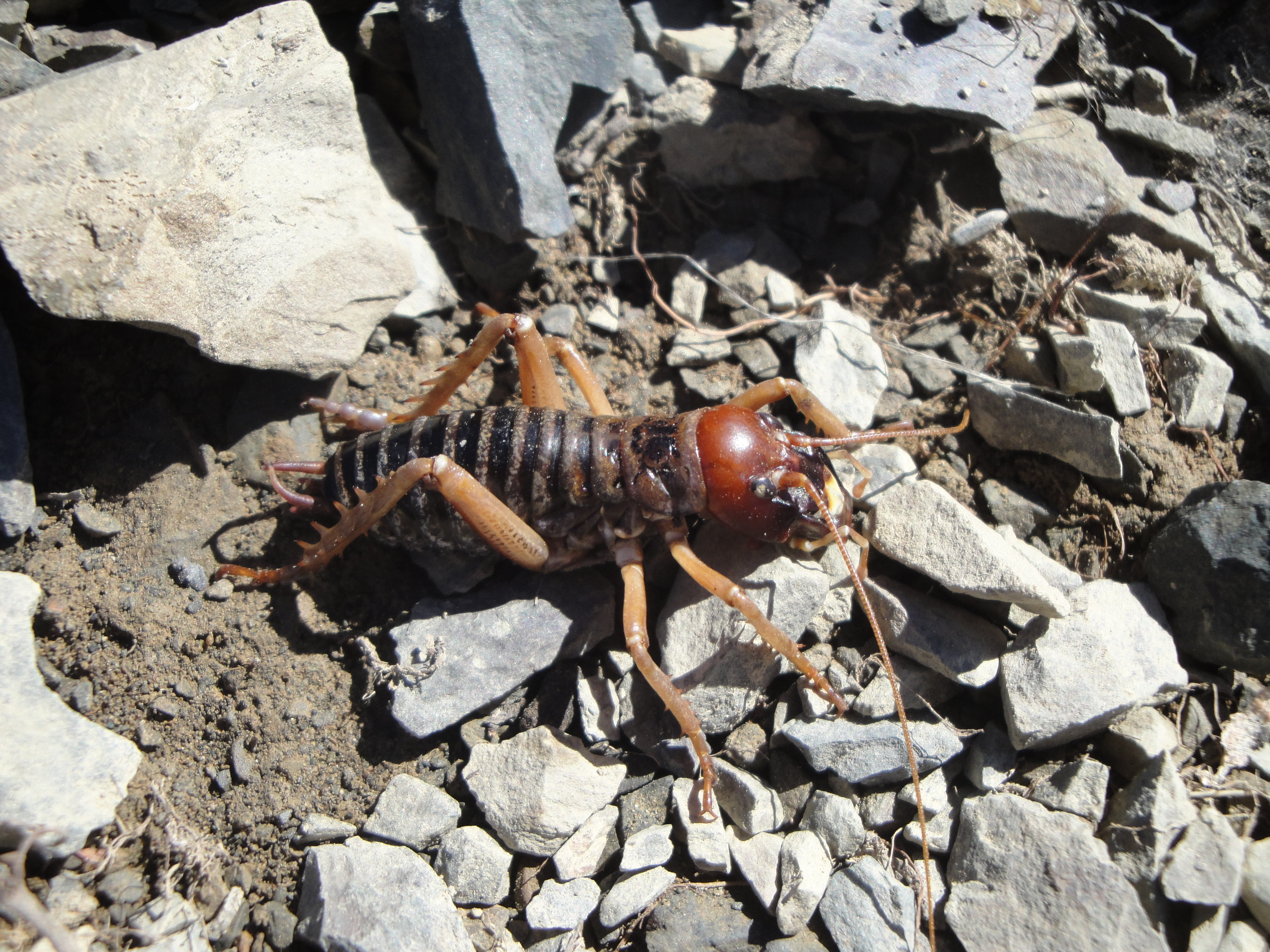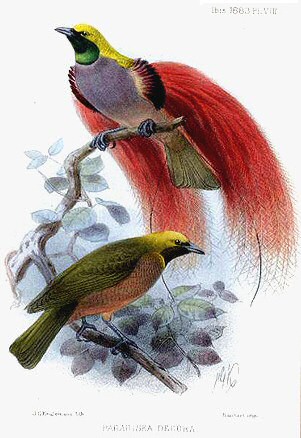|
Hemideina Maori
''Hemideina maori'', also known as the mountain stone wētā, is a wētā of the family Anostostomatidae. They are a large, flightless, nocturnal orthopteran endemic to New Zealand. Mountain stone wētā are long lived and are found on many central mountain ranges in New Zealand's South Island. __TOC__ Taxonomy ''Hemideina maori'' was first described in 1891 by Swiss Entomologists Alphonse Pictet and Henri de Saussure. Habitat and distribution Unlike other ''Hemideina'' species ''H. maori'' occupy an alpine habitat. They are found at high elevation (above the tree line) of the South Island of New Zealand. They have been found above 1500 metres above sea level (m.a.s.l) with a lower limit of 1100m.a.s.l, from the Kaikoura Ranges south to the Rock and Pillar range in Otago. They use cavities under rock slabs ('tors') broken from schist outcrops as retreats during the day. Tors are separated by alpine meadows with no rocks and therefore are assumed to have no wētā, causin ... [...More Info...] [...Related Items...] OR: [Wikipedia] [Google] [Baidu] |
Animal
Animals are multicellular, eukaryotic organisms in the Kingdom (biology), biological kingdom Animalia. With few exceptions, animals Heterotroph, consume organic material, Cellular respiration#Aerobic respiration, breathe oxygen, are Motility, able to move, can Sexual reproduction, reproduce sexually, and go through an ontogenetic stage in which their body consists of a hollow sphere of Cell (biology), cells, the blastula, during Embryogenesis, embryonic development. Over 1.5 million Extant taxon, living animal species have been Species description, described—of which around 1 million are Insecta, insects—but it has been estimated there are over 7 million animal species in total. Animals range in length from to . They have Ecology, complex interactions with each other and their environments, forming intricate food webs. The scientific study of animals is known as zoology. Most living animal species are in Bilateria, a clade whose members have a Symmetry in biology#Bilate ... [...More Info...] [...Related Items...] OR: [Wikipedia] [Google] [Baidu] |
Frass
Frass refers loosely to the more or less solid excreta of insects, and to certain other related matter. Definition and etymology ''Frass'' is an informal term and accordingly it is variously used and variously defined. It is derived from the German word ''Fraß'', which means the food takeup of an animal.M. Clark and O. Thyen. The Oxford-Duden German Dictionary. Publisher: Oxford University Press 1999. The English usage applies to excreted residues of anything that insects had eaten, and similarly, to other chewed or mined refuse that insects leave behind. It does not generally refer to fluids such as honeydew, but the point does not generally arise, and is largely ignored in this article. Such usage in English originated in the mid-nineteenth century at the latest. Modern technical English sources differ on the precise definition, though there is little actual direct contradiction on the practical realities. One glossary from the early twentieth century speaks of "...excreme ... [...More Info...] [...Related Items...] OR: [Wikipedia] [Google] [Baidu] |
Polymorphism (biology)
In biology, polymorphism is the occurrence of two or more clearly different morphs or forms, also referred to as alternative ''phenotypes'', in the population of a species. To be classified as such, morphs must occupy the same habitat at the same time and belong to a panmictic population (one with random mating). Ford E.B. 1965. ''Genetic polymorphism''. Faber & Faber, London. Put simply, polymorphism is when there are two or more possibilities of a trait on a gene. For example, there is more than one possible trait in terms of a jaguar's skin colouring; they can be light morph or dark morph. Due to having more than one possible variation for this gene, it is termed 'polymorphism'. However, if the jaguar has only one possible trait for that gene, it would be termed "monomorphic". For example, if there was only one possible skin colour that a jaguar could have, it would be termed monomorphic. The term polyphenism can be used to clarify that the different forms arise from the ... [...More Info...] [...Related Items...] OR: [Wikipedia] [Google] [Baidu] |
Monophyly
In cladistics for a group of organisms, monophyly is the condition of being a clade—that is, a group of taxa composed only of a common ancestor (or more precisely an ancestral population) and all of its lineal descendants. Monophyletic groups are typically characterised by shared derived characteristics (synapomorphies), which distinguish organisms in the clade from other organisms. An equivalent term is holophyly. The word "mono-phyly" means "one-tribe" in Greek. Monophyly is contrasted with paraphyly and polyphyly as shown in the second diagram. A ''paraphyletic group'' consists of all of the descendants of a common ancestor minus one or more monophyletic groups. A '' polyphyletic group'' is characterized by convergent features or habits of scientific interest (for example, night-active primates, fruit trees, aquatic insects). The features by which a polyphyletic group is differentiated from others are not inherited from a common ancestor. These definitions have take ... [...More Info...] [...Related Items...] OR: [Wikipedia] [Google] [Baidu] |
Sexual Selection
Sexual selection is a mode of natural selection in which members of one biological sex choose mates of the other sex to mate with (intersexual selection), and compete with members of the same sex for access to members of the opposite sex (intrasexual selection). These two forms of selection mean that some individuals have greater reproductive success than others within a population, for example because they are more attractive or prefer more attractive partners to produce offspring. Successful males benefit from frequent mating and monopolizing access to one or more fertile females. Females can maximise the return on the energy they invest in reproduction by selecting and mating with the best males. The concept was first articulated by Charles Darwin who wrote of a "second agency" other than natural selection, in which competition between mate candidates could lead to speciation. The theory was given a mathematical basis by Ronald Fisher in the early 20th century. Sexual ... [...More Info...] [...Related Items...] OR: [Wikipedia] [Google] [Baidu] |
Raoulia
''Raoulia'' is a genus of New Zealand plants in the tribe Gnaphalieae within the family Asteraceae. Many ''Raoulia'' species grow in alpine areas, forming very fine and dense growths. These compact growths form large amorphous cushion-like masses with only the growing tips visible. Due to their shape and form, the plant clusters resemble sheep from afar, this giving them their alternate name, vegetable sheep. The range of some species, such as ''Raoulia beauverdii'', includes coastal places. Taxonomy ; Species ; Formerly included * '' Argyrotegium mackayi'' (''Raoulia mackayi) Cultivation Slow spreading, flat rock garden plant with silver-gray, almost moss-like, foliage. * sun: full sun, part shade * height: 2 inches * width: spreads to around 1 ft. * water: regular * hardiness: 20 °F according to one source, 35 degrees F according to another * heat tolerance: unknown See also * Vegetable Lamb of Tartary The Vegetable Lamb of Tartary (Latin: ''Agnus scythicus'' ... [...More Info...] [...Related Items...] OR: [Wikipedia] [Google] [Baidu] |
Anisotome
''Anisotome'' is a genus of flowering plants in the family Apiaceae. It has 16 species and is found in Australia and New Zealand New Zealand ( mi, Aotearoa ) is an island country in the southwestern Pacific Ocean. It consists of two main landmasses—the North Island () and the South Island ()—and over 700 smaller islands. It is the sixth-largest island count .... References Apioideae Taxa named by Joseph Dalton Hooker Apioideae genera {{Apiaceae-stub ... [...More Info...] [...Related Items...] OR: [Wikipedia] [Google] [Baidu] |
Celmisia
''Celmisia'' (New Zealand aster or New Zealand daisy) is a genus of perennial herbs or subshrubs, in the family Asteraceae. Most of the species are endemic to New Zealand New Zealand ( mi, Aotearoa ) is an island country in the southwestern Pacific Ocean. It consists of two main landmasses—the North Island () and the South Island ()—and over 700 List of islands of New Zealand, smaller islands. It is the ...; several others are endemic to Australia. ; Species and nothospecies References PlantNET: New South Wales Flora Online: Genus ''Celmisia''Flora of New Zealand: Taxa: Celmisia {{Taxonbar, from=Q2708310 Flora of Australasia Asteraceae genera Taxa named by Henri Cassini ... [...More Info...] [...Related Items...] OR: [Wikipedia] [Google] [Baidu] |
Lipid
Lipids are a broad group of naturally-occurring molecules which includes fats, waxes, sterols, fat-soluble vitamins (such as vitamins A, D, E and K), monoglycerides, diglycerides, phospholipids, and others. The functions of lipids include storing energy, signaling, and acting as structural components of cell membranes. Lipids have applications in the cosmetic and food industries, and in nanotechnology. Lipids may be broadly defined as hydrophobic or amphiphilic small molecules; the amphiphilic nature of some lipids allows them to form structures such as vesicles, multilamellar/ unilamellar liposomes, or membranes in an aqueous environment. Biological lipids originate entirely or in part from two distinct types of biochemical subunits or "building-blocks": ketoacyl and isoprene groups. Using this approach, lipids may be divided into eight categories: fatty acyls, glycerolipids, glycerophospholipids, sphingolipids, saccharolipids, and polyketides (derived from ... [...More Info...] [...Related Items...] OR: [Wikipedia] [Google] [Baidu] |
Predation
Predation is a biological interaction In ecology, a biological interaction is the effect that a pair of organisms living together in a community have on each other. They can be either of the same species (intraspecific interactions), or of different species ( interspecific interactio ... where one organism, the predator, kills and eats another organism, its prey. It is one of a family of common feeding behaviours that includes parasitism and micropredation (which usually do not kill the host) and parasitoidism (which always does, eventually). It is distinct from scavenging on dead prey, though many predators also scavenge; it overlaps with herbivory, as seed predators and destructive frugivores are predators. Predators may actively search for or pursue prey or wait for it, often concealed. When prey is detected, the predator assesses whether to attack it. This may involve ambush predation, ambush or pursuit predation, sometimes after stalking the prey. If the attack ... [...More Info...] [...Related Items...] OR: [Wikipedia] [Google] [Baidu] |
Scavenger
Scavengers are animals that consume dead organisms that have died from causes other than predation or have been killed by other predators. While scavenging generally refers to carnivores feeding on carrion, it is also a herbivorous feeding behavior. Scavengers play an important role in the ecosystem by consuming dead animal and plant material. ''Decomposers'' and detritivores complete this process, by consuming the remains left by scavengers. Scavengers aid in overcoming fluctuations of food resources in the environment. The process and rate of scavenging is affected by both biotic and abiotic factors, such as carcass size, habitat, temperature, and seasons. Etymology Scavenger is an alteration of ''scavager,'' from Middle English ''skawager'' meaning " customs collector", from ''skawage'' meaning "customs", from Old North French ''escauwage'' meaning "inspection", from ''schauwer'' meaning "to inspect", of Germanic origin; akin to Old English ''scēawian'' and German ... [...More Info...] [...Related Items...] OR: [Wikipedia] [Google] [Baidu] |






_with_its_prey.jpg)
